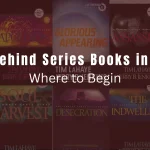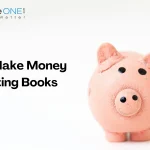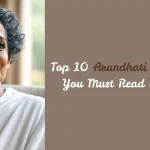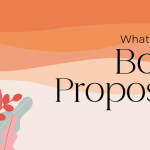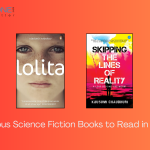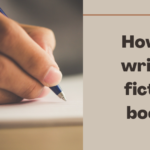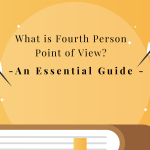Writing a book blurb can be likened to an artistic endeavor, requiring a careful balancing act between enticing the reader and providing just enough information to pique their interest.
It’s one of the most important marketing tools for your book. What therefore constitutes an effective book blurb? Let’s get down to business and create an intriguing book synopsis that will draw readers in and encourage them to keep reading.
Understanding the Purpose of a Book Blurb
Capturing Attention
A book blurb must grab the reader’s interest from the outset. Readers should be captivated and eager to learn more after reading the opening few phrases. This can be accomplished by teasing the plot of the book, posing an interesting dilemma, or introducing a captivating character.
A strong book blurb is an essential tool for any author hoping to connect with their audience since it compels readers to open the book and turn pages.
Providing a Snapshot
The purpose of a book blurb is to provide prospective readers a quick overview of the plot while omitting any major spoilers. It’s a synopsis that focuses on the primary storyline, presents important characters, and establishes the overall mood of the work.
A strong book blurb encourages people to pick up the book and continue reading by providing just enough details to spark their curiosity.
Setting the Tone
Setting the tone in a book blurb is crucial because it gives readers a glimpse of the book’s mood and style. Whether it’s a thrilling mystery or a heartfelt romance, the blurb should match the book’s atmosphere.
This connection helps potential readers decide if the book suits their tastes, making them more likely to pick it up. A well-crafted tone can captivate readers and encourage them to explore the story further.
You may also read: List of Nobel Prize Winners in India(Updated)
Elements of a Compelling Book Blurb
Hook: In a book blurb, a great hook is essential since it immediately captures the reader’s interest. Usually the first sentence or two, the hook should pique readers’ interest and entice them to read on.
It could set up a suspenseful scene, ask a thought-provoking query, or draw attention to a particular feature of the narrative. The hook establishes the tone and sparks curiosity in a book blurb, enticing prospective readers to read further.
A strong hook can greatly increase the likelihood that a book will be picked up and read by succinctly expressing the substance of the work in an interesting way.
Summary: The summary is a crucial part of a book blurb, offering readers a snapshot of the story without giving away too much. It should introduce the main characters, setting, and central conflict in a way that sparks curiosity.
A good summary highlights the book’s unique aspects and hooks readers by hinting at the excitement or drama within the pages. Remember, the goal is to entice readers to want to learn more by picking up the book. Keeping the summary concise yet intriguing is key to crafting an effective book blurb.
Tone and Voice: A book blurb’s voice and tone play a critical role in drawing in readers. A book blurb should give readers an idea of what to expect and should be in line with the genre and style of the book. A romance story, for example, can be cozy and welcoming, yet a thriller might be urgent and suspenseful.
The blurb should be entertaining and authentic, with the voice reflecting the author’s distinct approach. A book blurb can captivate readers and pique their curiosity by skillfully selecting the appropriate tone and voice.
Call to Action: An effective book blurb must include a “call to action.” Readers are encouraged to move on by this attractive and straightforward cue, which can be used to buy the book, read an excerpt, or learn more about the plot.
A strong call to action should be succinct, compelling, and arouse curiosity or a sense of urgency. Phrases like “Join the journey,” “Uncover the mystery,” or “Discover the adventure,” for instance, might draw in readers. A compelling call to action in your book’s blurb can greatly boost interest and boost sales.
You may also like: Top 10 ELF Name Generators for Fantasy Writers
Researching Your Genre and Audience
Identifying Key Genre Conventions
Finding important genre norms is crucial when writing a book blurb after doing audience and genre research. Readers can anticipate certain themes, characteristics, and techniques from a particular genre.
A mystery book synopsis could, for instance, highlight an intriguing crime, a cunning investigator, and an unexpected turn of events. A romance book blurb, on the other hand, frequently concentrates on the characters’ emotional journey and the prospect of a happy conclusion.
Your book will stand out in a crowded market if you comprehend and use these patterns to your blurb in order to effectively draw in and engage your target audience.
Understanding Reader Expectations
Writing a book blurb that works requires an understanding of reader expectations. It entails exploring the inclinations, passions, and needs of your intended audience.
Identifying recurring themes, cliches, and components that appeal to readers can be facilitated by conducting audience and genre research. Knowing what people anticipate from a book in your category will help you craft a synopsis that will live up to their expectations and draw them in.
Whether your book is a gripping mystery or a sweet romance, matching your blurb to reader expectations will make it more likely that they will notice it and decide to take it up.
You may also like: How to Avoid Plagiarism in Assignments: 10 Easy Steps
Creating the Hook
What is a Hook?
The goal of writing a book blurb hook is to capture the reader’s interest right away. A hook is an intriguing sentence or phrase that draws readers in and makes them want to read more. It should arouse interest, feelings, or intrigue while laying the groundwork for the book synopsis that follows.
Examples of Effective Hooks
- “What if you could live forever, but had to kill to do it?”
- “She thought her life was perfect until a stranger revealed a devastating secret.”
Crafting Your Own Hook
Consider the most captivating element in your narrative. What sentence or query could you use to grab someone’s attention right away?
Writing the Summary
Keeping It Concise
You should make your summary succinct and direct. Try not to exceed 150–200 words.
Avoiding Spoilers
Provide just enough information to spark curiosity without revealing important story points or surprises.
Highlighting Key Characters and Plot Points
Describe your primary characters and the key conflict. This makes it clearer to readers what the book is about and who they should support.
Setting the Tone and Voice
Matching the Blurb to Your Book’s Style
Knowing the tone and style of your book is the first step in creating an interesting book blurb. It’s critical that the blurb complement the tone of the book. It guarantees that prospective readers will have a preview of what to expect. Whether the blurb is humorous, poignant, or suspenseful, it will be more appealing if its language and tone match your book.
Examples from Different Genres
- Romance: “Amidst the bright lights of Paris, a young woman finds herself entangled in a love triangle that could change her life forever.”
- Thriller: “A detective on the brink of retirement must solve one last case – a case that could end everything he holds dear.”
Including a Call to Action
What is a Call to Action?
A book blurb’s call to action (CTA) is an appeal to the reader to do something particular, like purchase the book or subscribe to updates. It’s essential for drawing in new readers and influencing them to buy the book or engage with it further.
Examples of Effective Calls to Action
- “Dive into this epic adventure today!”
- “Discover the secrets hidden within these pages.”
How to Write an Engaging Call to Action
Writing a compelling call to action (CTA) for a book blurb is essential. Choose a powerful verb that compel action to begin, such as “Discover,” “Grab,” or “Experience.” Indicate for the readers exactly what they will learn—if it’s humor, suspense, or insight. To encourage instantaneous involvement, use succinct language and convey a sense of urgency.
Common Mistakes to Avoid
Overloading with Information
A book blurb should not contain too much information. Remain succinct and concentrated on the primary storyline and characters. A blurb that is too detailed may confuse readers and lose its impact. To pique readers’ curiosity without giving away too much, stick to the essentials.
Being Vague
One typical mistake to avoid in book blurbs is being too general. Clear and captivating information about the story, characters, and themes of your book should be included in the blurb. Lack of clarity might cause readers to get disinterested and reduce sales by leaving them unclear of what to expect.
Misleading the Reader
When writing a book blurb, one crucial error to avoid is “misleading the Reader”. To get attention, it entails embellishing or falsifying the information. This strategy can backfire, disappointing readers and harming the book’s standing. Accuracy and honesty are essential for a convincing and reliable book synopsis.
Editing and Polishing Your Blurb
Importance of Revision
Editing and Polishing Your Book Blurb is an essential tool for drawing in readers. Editing guarantees that your synopsis is lucid, succinct, and compelling. It helps you get rid of mistakes, polish your writing, and create a book that stands out. Rewriting your book blurb can have a significant impact on how well it attracts potential readers.
Seeking Feedback
In order to make sure your blurb effectively conveys the core of your story, “Editing and Polishing Your Book Blurb” suggests getting input from reliable sources. Consult mentors, writing clubs, or beta readers for their opinions. Giving constructive criticism to your blurb will help it become more appealing to readers and more effective at promoting your book.
Final Proofreading Tips
“Final Proofreading Tips” are essential for crafting the ideal book synopsis. Check for mistakes in punctuation, grammar, and spelling. To identify odd wording or inconsistencies, read aloud. Take pauses in between edits to keep your mind open to new ideas. Finally, get a second viewpoint by having a friend review. These actions guarantee a well-written book synopsis.
Real-World Examples and Analysis
Successful Blurbs from Popular Book
“Gone Girl” by Gillian Flynn: “On a warm summer morning in Missouri, it is Nick and Amy Dunne’s fifth wedding anniversary. Presents are being wrapped and reservations are being made when Nick’s clever and beautiful wife disappears.”
“The Hunger Games” by Suzanne Collins: “In the ruins of a place once known as North America lies the nation of Panem, a shining Capitol surrounded by twelve outlying districts. The Capitol keeps the districts in line by forcing them all to send one boy and one girl to participate in the annual Hunger Games, a fight to the death on live TV.”
Conclusion
To draw readers in and spark interest in your book, you must write an engaging book synopsis. You may write a blurb that sells by knowing the essential components of a strong book blurb and applying techniques to grab readers’ attention and motivate them to act.



